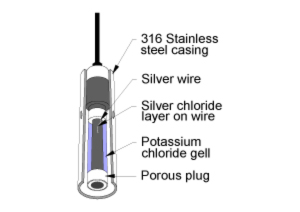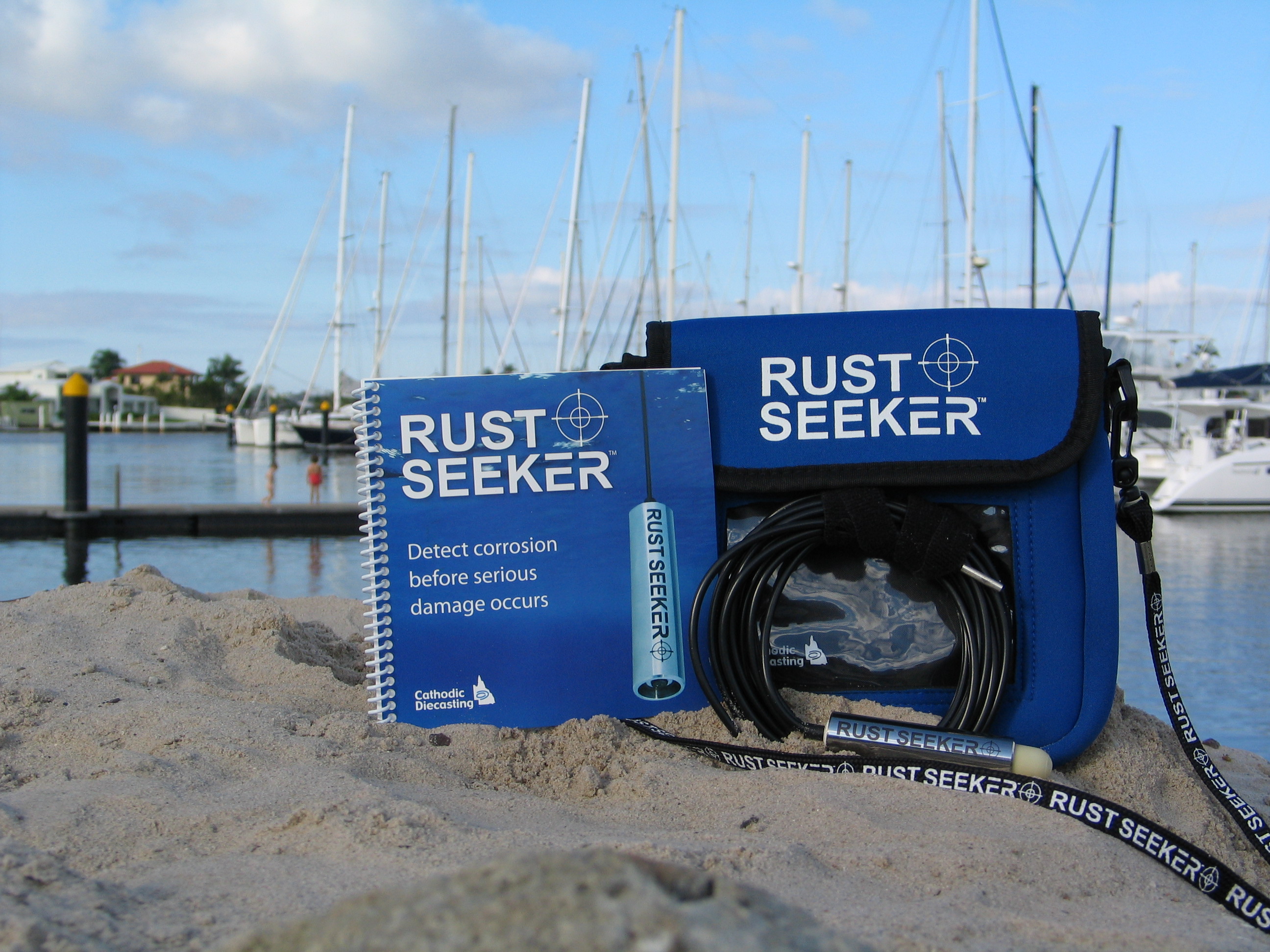About Us
Cathodic Anodes Australasia has been manufacturing anodes since 1984. Since that time we have established ourselves as Australia's leading galvanic anode maufacturer. We manufacture anodes for the following industries:
- oil and gas
- wharves
- construction
- shipping
- pipelines
- commercial fishing
- pleasure craft
- cooling towers
- ports
- mining
- defence
- infrastructure
- tanks
- yachts
- hot water serices
The Rust Seeker™ reference electrode was developed to provide a simple and cost effective method for vessel owners to check whether their anodes and hull coating offered sufficient protection against corrosion. It was also developed to allow vessel owners to check for stray current.

What is Rust Seeker™?
Rust Seeker™ is a silver/silver chloride reference electrode. it measures the electrochemical potential of your vessel, indicating whether your vessel is adequately protected against corrosion.
Using Rust Seeker™ and most standard multi-meters you can take readings around your vessel, and then compare the results against the assessment table to check f your vessel is protected against corrosion.
How does it work?
Rust Seeker™ is an electrochemical cell which has a stable reproducible potential so that it can be used as a reference point for voltage measurements. Rust Seeker™ consists of a silver wire, coated with a layer of silver chloride, which is saturated in a potassium chloride gel.
The porous plug allows contact with the seawater which allows Rust Seeker™ to consistently produce accurate electrochemical potential readings of your vessel.
Where can I use Rust Seeker™?
Rust Seeker™ is designed for use in clean seawater. It is designed for Steel and Aluminium hulled vessels. Rust Seeker™ can also be used in fresh water.
Is my multi-meter suitable?
Rust Seeker™ works with most commonly available digital or analogue multi-meters. For the most accurate readings the multi-meter requires an input impedance of at least 10MΩ (megohms) and an accuracy or +/- 10mV (millivolts) or better.

Use Rust Seeker™ to identify stray current
Whether your vessel is made of Steel, Aluminium, Fiberglass or Timber, Rust Seeker™ can be used to identify stray current.
Your hull does not necessarily need to be metallic to suffer from the effects of electrolytic corrosion. Sub surface metallic components such as propellers, shafts and shaft struts, rudder blades and skin fittings are also at risk.
Confusion often exists between electrolytic and galvanic corrosion. The difference is quite simple: whereas galvanic corrosion is caused by an electric current generated by two different metals in a conducting medium such as seawater (a ‘seawater battery’), electrolytic corrosion is caused by a current from an external source, often the boat’s battery or a shore supply.


Permanently moored vessels can be susceptible to 4 main sources of stray current.
- Marina mains power or from marina cathodic protection system
- Ship onboard power
- Neighboring moored vessels
- Submarine power cables (very rare and signage almost always present to identify cable location)
When galvanic anodes have been correctly designed and installed, the electrical potential of the vessel and its individual components should be in the range of -800mV to - 1,100mV in sea water (with respect to a AgAgCl Reference Electrode).
If stray current is having an adverse effect on your vessel, Rust Seeker™ will detect a shift in your vessel’s potential. This can be interpreted in one of two ways:
- Loss of or spent galvanic anodes possibly combined with poor coating system.
- Electrolytic corrosion through stray current.
Kirby Canete
Seaswift Marine
The Rust Seeker is a straight forward piece of equipment that provides results. It is a great help with our decision making for the protection of our fleet's hulls.




